Happy Bill of Rights Day! Celebrated each Dec. 15, this day is more than a historical commemoration of the first ten amendments to our Constitution. It’s also a call to action by prompts citizens to practice, reflect on, and defend the democratic ideals that define the United States.
How well do you know the Bill of Rights and its enduring impact on our daily lives? In honor of the holiday, here’s a 10-question (of course!) quiz about these amazing amendments.
1. What events and debates led to the inclusion of the Bill of Rights in the U.S. Constitution?
a. The Constitutional Convention of 1787
b. The ratification debates
c. The Federalist Papers
d. Both a and b
e. All of the above
d. Both a and b. Supporters of the Constitution, the Federalists, thought a bill of rights was unnecessary– even dangerous. The authors of The Federalist Papers, including James Madison, argued for ratification of the Constitution without a bill of rights.
2. Which U.S. Supreme Court case is often cited as a landmark decision expanding the scope of the First Amendment’s protection of freedom of speech?
a. Marbury v. Madison
b. Brown v. Board of Education
c. New York Times v. Sullivan
d. Roe v. Wade
c. New York Times v. Sullivan. The 1964 decision established the important principle that the First Amendment guarantees of freedom of speech and press may protect libelous words about a public official to foster vigorous debate about government and public affairs.
3. How does the concept of selective incorporation relate to the Bill of Rights?
a. It refers to the process of applying the Bill of Rights to the states through the 14th Amendment.
b. It signifies the selective enforcement of specific amendments by the federal government.
c. It outlines the procedure for amending the Bill of Rights.
d. It describes the power of Congress to regulate commerce among the states.
a. It refers to the process of applying the Bill of Rights to the states through the 14th Amendment. Selective incorporation refers to the case-by-case approach of deciding which portions of the Bill of Rights apply to states. Incorporation doctrine refers to the general concept that states cannot deny citizens protections mentioned in the Bill of Rights.
4. Which amendment addresses issues related to the quartering of soldiers in private homes during peacetime?
a. First Amendment
b. Third Amendment
c. Fourth Amendment
d. Fifth Amendment
b. Third Amendment. Described by some as “a preference for the civilian over the military,” the Third Amendment forbids the forcible housing of military personnel in a citizen’s home during peacetime and requires the process to be “prescribed by law” in times of war.
5. How has the interpretation of the Second Amendment evolved, particularly in recent U.S. Supreme Court decisions?
a. It has expanded the right to bear arms for all individuals.
b. It has limited the right to bear arms to only those in a well-regulated militia.
c. It has clarified that the Second Amendment only applies to handguns.
d. It has left the interpretation largely unchanged.
a. It has expanded the right to bear arms for all individuals.
6. Which amendment protects citizens from unreasonable searches and seizures, and how has this right been impacted by technological advancements?
a. Fourth Amendment; it has been expanded to include protection against electronic surveillance.
b. Fifth Amendment; it has been restricted in the digital age.
c. Sixth Amendment; it has been largely unaffected by technological changes.
d. Eighth Amendment; it has been extended to cover cybercrimes.
a. Fourth Amendment; it has been expanded to include protection against electronic surveillance. The amendment protects privacy by governing how police may surveil people’s effects – including, today, their electronic data.
7. How does the First Amendment protect symbolic speech, and what are some examples of symbolic expression?
a. It does not protect symbolic speech.
b. It protects only written or spoken words.
c. It protects actions that convey a particular message, and examples include flag burning and peaceful protests.
d. It protects only non-controversial forms of expression.
c. It protects actions that convey a particular message, and examples include flag burning and peaceful protests. Symbolic speech consists of nonverbal, nonwritten forms of communication, such as flag burning, wearing armbands, and burning of draft cards. It is generally protected by the First Amendment unless it causes a specific, direct threat to another individual or public order.
8. In what way does the Ninth Amendment contribute to constitutional interpretation and protection of individual rights?
a. It establishes the right to privacy explicitly.
b. It reserves all rights not explicitly mentioned in the Constitution to the people.
c. It protects individuals from self-incrimination.
d. It ensures the right to a fair and impartial trial.
b. It reserves all rights not explicitly mentioned in the Constitution to the people. In other words, the existence of a written constitution should not be treated as an excuse for ignoring nontextual rights, but it also tells us that the advocates of these rights cannot rest on ancient constitutional texts to establish their existence.
9. How do the Equal Protection Clause of the 14th Amendment and the Bill of Rights intersect in shaping civil rights jurisprudence?
a. The Equal Protection Clause reinforces the Bill of Rights, ensuring equal application of its protections.
b. The Equal Protection Clause has no relation to the Bill of Rights.
c. The Equal Protection Clause restricts the application of the Bill of Rights to certain groups.
d. The Bill of Rights supersedes the Equal Protection Clause in cases of conflict.
a. The Equal Protection Clause reinforces the Bill of Rights, ensuring equal application of its protections.
10. What does the Tenth Amendment of the United States Constitution primarily address?
a. Freedom of speech.
b. The right to bear arms.
c. The powers not delegated to the federal government.
d. The right to a fair trial.
c. The powers not delegated to the federal government. The Tenth Amendment was intended to confirm the understanding of the people at the time the Constitution was adopted, that powers not granted to the United States were reserved to the States or to the people.



